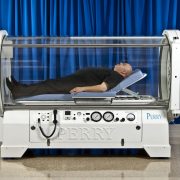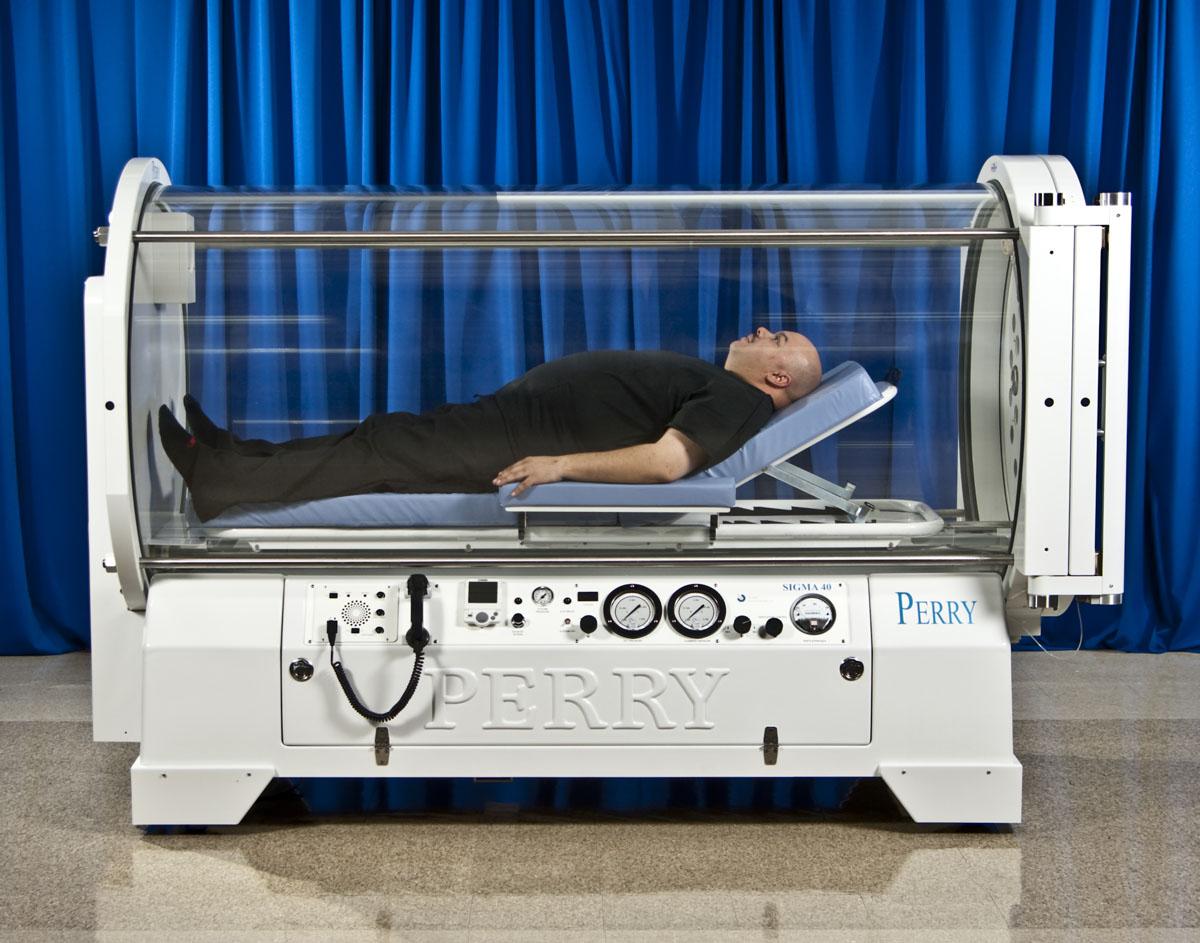Hyperbaric Medicine
What is Hyperbaric Oxygen Therapy?
Hyperbaric oxygen therapy is a medical treatment administered by delivering 100% oxygen at pressures greater than atmospheric (sea level) pressure to a patient in an enclosed chamber. Hyperbaric oxygen acts as a drug, eliciting varying levels of response at different treatment depths, durations, and dosages and has been proven to be effective as adjunctive therapy for specifically indicated conditions.
What are Accepted Indications?
The following is a partial list of conditions that have been determined to be acceptable indications for hyperbaric oxygen therapy by Medicare, the Undersea and Hyperbaric Medical Society (ACHM). It is very important to note that each organization has its own list of approved indications and the following list is a combination of those lists and not an approved list from any one organization listed here. In most cases, medical insurance carriers (including Medicare and Medicaid) provide coverage for hyperbaric oxygen therapy.
Acute/Emergent
- Cyanide/carbon monoxide poisoning
- Cerebral arterial gas embolism
- Decompression sickness
- Exceptional blood loss anemia
- Necrotizing soft tissue infections (necrotizing fasciitis)
- Gas gangrene
- Crush injury; compartment syndrome
- Reattachment and suturing of limbs
- Peripheral ischemia, including compartment syndrome
- Thermal burns
- Brown recluse spider bite
Chronic
- Actinomycosis
- Enhancement of healing in selected problem wounds
- Compromised skin graft flaps
- Radiation necrosis
- Refractory osteomyelitis
- Refractory mycoses
Comprehensive wound assessment.
- General diagnostics performed as deemed necessary
- Wound cultures (tissue cultures mostly)
- Nutritional assessment
- Blood work
- Vascular testing
- Radiologic evaluations
- Off loading
- Needs assessment
Research
- Closed head injury
- Traumatic brain injury
- Cerebral palsy / stroke
- Near drowning
- Myocardial infarction (heart attack)
- Chronic fatigue (in HIV)
Is Physician Supervision Required?
For hyperbaric oxygen therapy to be covered under the Medicare program in the United States, the physician must be in constant attendance during the entire treatment. The physician must be present, carefully monitoring the patient during the hyperbaric oxygen therapy session and be immediately available should a complication occur.
How Does a Doctor Prescribe HBOT?
Hyperbaric oxygen therapy is usually offered as a referral and consultation service. A consultation appointment will be made for the patient once appropriate case documentation has been received.
What is the Hyperbaric Chamber?
The hyperbaric chamber is a steel, aluminum, or clear plastic room in which air can be compressed to a pressure that is greater than sea level. Chambers can have port holes (small windows) or be completely clear and made out of a special thick strong plastic shell. To enhance patient comfort, music or movies can be played during treatments, which are usually provided through a headset or an interior speaker.
Are there any Side Effect?
The most common side effect is barotraumas to the ears and sinuses caused by pressure changes. To minimize this risk, patients learn techniques to promote adequate clearing of the ears during compression. Other side effects are rarer, but may include oxygen toxicity, claustrophobia, and accelerated maturation of cataracts, Progressive myopia. Occasionally, some patients experience visual changes after several treatments that cause them to have changes in their visual acuity. This is usually only temporary and should disappear three or four months after the treatments stop. Other side effects are extremely rare
Claustrophobia
– relived mostly by education, medication Pulmonary and neurological manifestations (seizure) of oxygen poisoning are often cited as major concerns
Cardiovascular responses of CHF if fluid over load is present
Any feeling out of the ordinary should be reported to the treating attendants immediately.
How does Hyperbaric Oxygen Therapy Work?
Hyperbaric oxygen therapy saturates the patient’s plasma with oxygen resulting in increased oxygen delivery to tissues. Specifically, hyperbaric oxygen therapy:
Dissolves oxygen into the plasma
- Increases oxygen tension in hypoxic areas
- Enhances white blood cell activity at the wound site
- Reduces edema by vasoconstriction
- Blocks cytotoxic effects of carbon monoxide and hypoxia associated with cyanide poisoning
- Starts the formation of new peripheral


